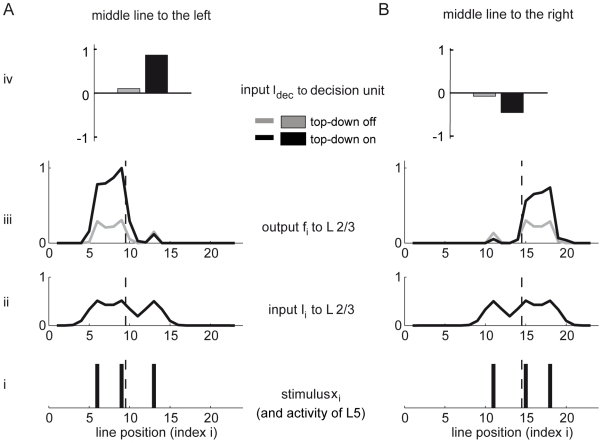Figure 2. The top-down induced gain increase of the L2/3 neurons provokes symmetry breaking in the recurrent network and the resulting competition improves the signal-to-noise ratio underlying the bisection decisions.
(A) and (B): Network activities for two mirror symmetric bisection stimuli after learning. (i) Each line in the bisection stimulus activates a neuron in L5 at the corresponding position (dashed line indicates the stimulus center). (ii) The feedforward input to the L2/3 pyramidal neurons is locally spread. (iii) Local recurrent excitation and global inhibition competitively suppresses L2/3 pyramidal neurons receiving weak input, leading to a lateralization of the activity to the side of the middle line (A: left; B: right). An additional top-down gain increase enhances this lateralization (black versus grey lines). Deviations from mirror symmetry in the responses are due to a stochastic modulation of the lateral connectivity in L2/3. (iv) The input to the decision unit,  , is a weighted sum of the noisy L2/3 and L5 activities without (grey) and with (black) top-down input, upon which the decision ‘left’ or ‘right’ is made by thresholding at
, is a weighted sum of the noisy L2/3 and L5 activities without (grey) and with (black) top-down input, upon which the decision ‘left’ or ‘right’ is made by thresholding at  . The weak gain increase (by a factor of
. The weak gain increase (by a factor of  ) dramatically increases the signal (by a factor of
) dramatically increases the signal (by a factor of  and
and  , respectively). The plots show averaged activities over
, respectively). The plots show averaged activities over  runs with the same stimulus configurations.
runs with the same stimulus configurations.

